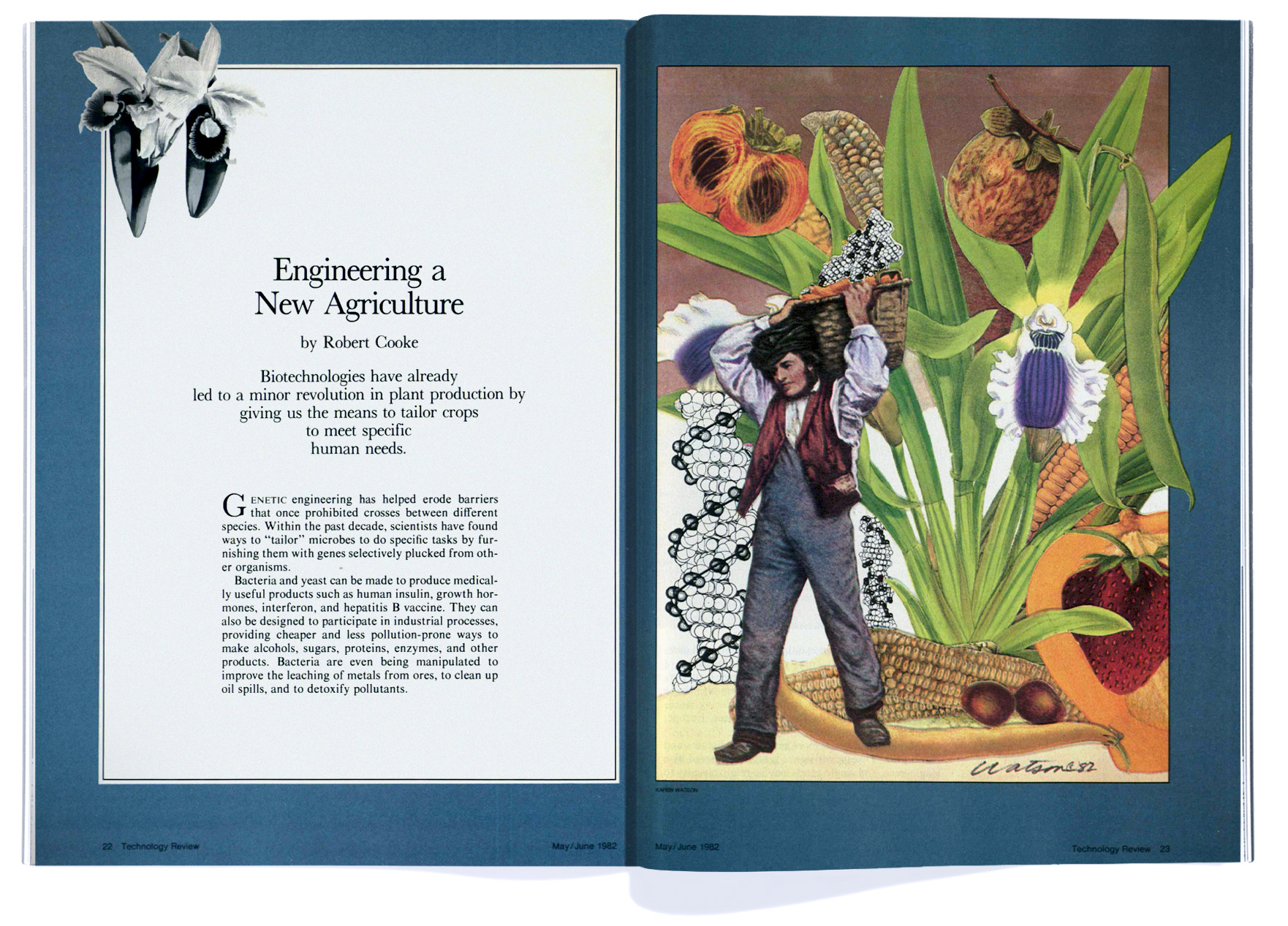Green Revolution redux
In the 1960s, Norman Borlaug, an American biologist, helped spark a period of transformative agricultural innovation known as the Green Revolution by selectively breeding a grain-packed, dwarf variety of wheat. (He would win a Nobel Peace Prize for this work.) In Asia, the Philippines-based International Rice Research Institute (IRRI) had similar success with rice. By the 1990s, the yields of wheat and rice had doubled worldwide, staving off bouts of recurring famine. The Green Revolution was so successful that dire predictions of worse famine to come—fueled by alarming population growth—no longer seemed likely.
But the Green Revolution had its limits—only so much yield could be coaxed from plants using conventional breeding techniques. Breeding gene pools are limited by sexual compatibility, and it’s also difficult to control which traits will be passed on. Plus, crossbreeding new varieties to produce desirable traits can take decades. A 1982 MIT Technology Review feature described efforts to overcome such conventional plant-breeding constraints by recombining genes from different species but they were still time-consuming, costly, and unpredictable.

Even today, with more precise gene-editing technologies like CRISPR, the lab-to-seed product life cycle can take 10 to 15 years, according to Keith Slotkin, a biological sciences professor at the University of Missouri and principal investigator at the Donald Danforth Plant Science Center. To shave time, Slotkin’s lab recently developed a more efficient genome-editing technique, transposase-assisted target-site integration, or TATSI. When coupled with CRISPR, TATSI enables scientists to insert a piece of DNA into a plant’s genome more precisely. Instead of having it randomly inserted, which can require growing and testing many iterations of a plant to determine the right location, “we can predetermine exactly where in the genome we want it inserted,” Slotkin explains. Such precision could save years on the time it takes for new plant varieties to make it from the lab to federally approved seed products.
Beyond reducing time to market, modern plant engineering efforts have shifted from yield per plant—a hallmark of the Green Revolution—to yield per acre. Slotkin cites corn: “By removing what’s called shade avoidance and increasing the leaf angle, you can seed at a denser rate.” Today, nearly 95% of all corn and soybeans grown in the US are genetically engineered to improve yield per acre, chiefly through herbicide- and insect-tolerant traits.
Plant scientists have also fortified staple crops with essential nutrients. Golden rice, for example, uses corn genes to produce beta-carotene, the precursor to vitamin A. Purple tomatoes have been genetically modified with snapdragon DNA to contain high levels of anthocyanins, the antioxidants found in blueberries and blackberries. Some plant engineers favor designer species, like non-browning Arctic apples and sweet Pinkglow pineapples.
Despite such advances, a 2020 poll by the Pew Research Center found that only 27% of Americans trust genetically engineered crops, even though a comprehensive 2016 report from the National Academies of Science found no evidence that genetically engineered food is less safe than conventional. But as climate change ratchets up its toll on agricultural yield and the global population continues to grow, genetically engineered crops with climate-friendly features—such as the ability to thrive in droughts or floods, generate their own fertilizer, and optimize land use—will likely become less the exception than the norm.

